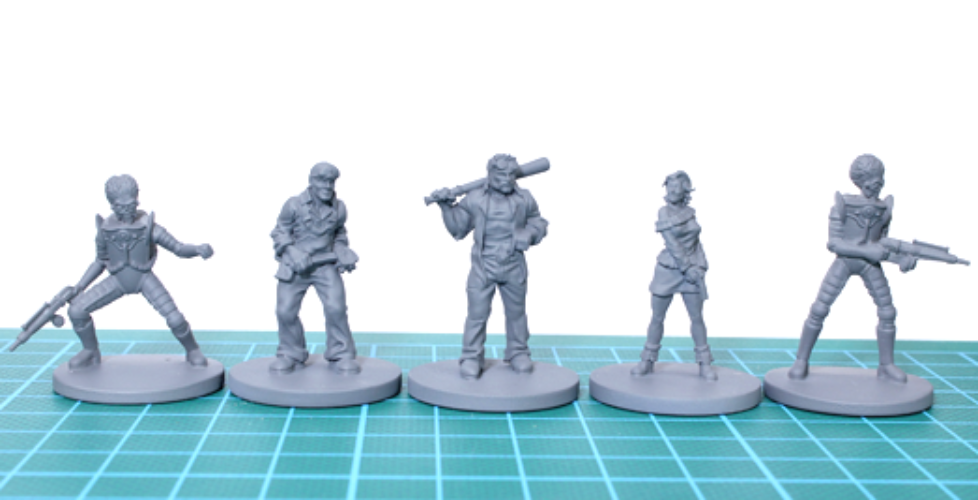Mr. WinterRose Looks Into the Democritization of Things.
I once wrote a thing about the ‘Democratization of Things‘. Or in this case, the coming of 3d printers to a more accessible mainstream. This will change the gaming miniature industry the same way a 4 mile asteroid might change our planet. “How so?” says Shane, who I was bouncing the idea off of for a post here.
Okay. Take this set of Space Marine Heroes we unboxed in a live stream. This box is a blind draw with a set amount of minis of varying degrees of rarity. You’ll probably get some duplicates in the box. It’s not a concept that’s unfamiliar to me. I was acquainted with the idea of blind buys when I was doing Magic the Gathering and Mage Knight in the 90’s and the aughts.

Now there’s some setup to this to make my point. Trust me. I’ll get back to our Space Marines.
Consider first the idea that for a 3d printer to be useful, you have to have something to print. Otherwise it’s a pretty expensive paperweight. And there’s places you can go online to buy 3d models of things to print. As the technology emerged, sites like Thingiverse had basic primitive shapes to use. Stuff that was really mass produce-able bits and bobs for craft projects that were more for 3d Printing enthusiasts than useful utility. (For that matter, we’ve got our own Shapeways store here at White Metal Games for useful bits and bobs.) But things have come along a way since then. And they’re coming on fast.
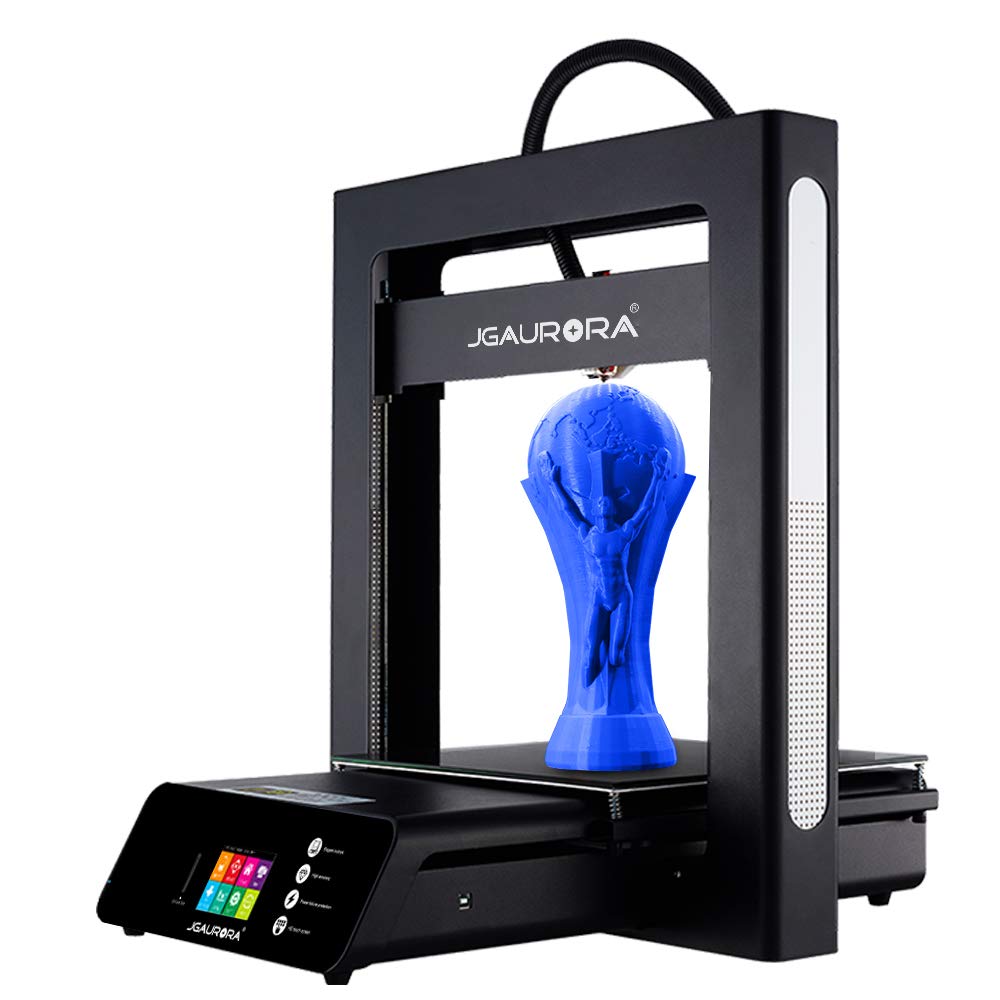
Another example might be how when I go to DragonCon every year, I get myself a resin replica of a famous, or not as famous blaster or sci-fi gun. The vendor of choice, whom I will not name here… their materials are okay. They’ve very obviously kitbashed themselves a model or replica together and have made molds. There’s even times when they’ve ‘poured’ the models they’re selling up in their rooms so they can cure overnight. There’s air bubbles in them. You need to sand the releasing agent off them before you can start working on them. And honestly, the product, while good to a cursory inspection, is about as good as a hero replica for action work. In other words, they don’t bear close scrutiny.
But in more recent years… I’m seeing sci-fi weapon replicas that were obviously assembled in computer programs like Maya and 3d Studio. Prototyped virtually and 3d printed to make their molds or pieces with. And this newer echelon of replicas are MUCH more professional looking. The feeling of authenticity is palpable. Like some executive might say, there’s a lot more THERE there.
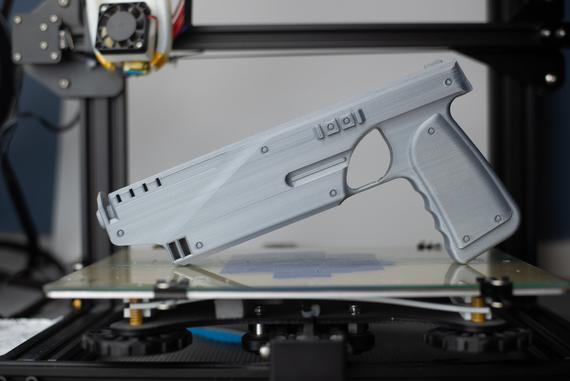
Now take that concept and imagine every obscure blaster from Sabine Wren’s Westar 35’s in SW: Rebels to Dr. Soren’s El-Aurian Disruptor from Star Trek: Generations. And imagine a Thingiverse type website where you can just download the 3d model for a modest fee for the 3D Artist, and you can print your own model kits of whatever blaster, or starship, or . Not only that, but now you can print as many as you have the raw plastic to print. Did something awful happen to your build? Run yourself off another copy and build it again. Want to do variations on a paint scheme and have a whole fleet of differently colored Klingon Birds of Prey? Print yourself up a task force of them. Or a whole squadron of Star League Havoc Gunstars. Or original flavor 1979 model Colonial Vipers. Get the idea?
That’s already happened.
Hell, there’s Etsy stores that make stuff that way that SPECIALIZE in this kind of genre object market.
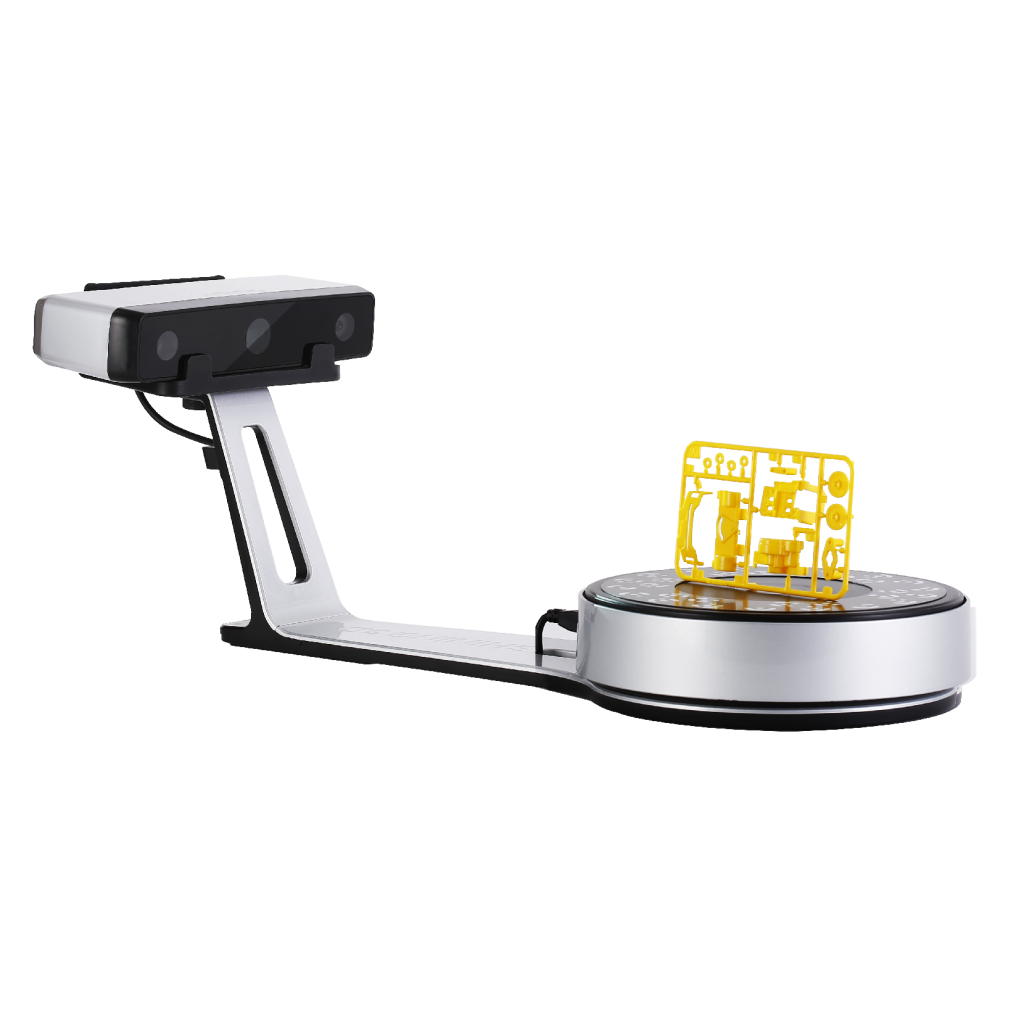
Take that idea a step further. You’ve got 3d ideas of your own of popular genre starships or guns, or things you’d like to create where you kitbash fan variants of those same ideas. You can make yourself a Federation Jester class gunboat, or any number of variant Corellian YT-series light freighters. Get yourself the models or the PIECES of models online and put them together as you see fit in the 3d software of your choice. Once you’ve got your virtual model… print that out.
There’s even specialized software you can download for your phone wherein you can 3d scan whatever object you feel like scanning. The middleman of 3d assembly skills in modelling software is entirely bypassed when you just set up the 3 dimensional object of your choice on a rotating platform. Point your smartphone at it and boot up the app, which takes many pictures of said object. The program then AI’s all those pictures together into a 3d model you can import into your 3d software. You can then alter that, or just straight up run off copies of the 3d object you just scanned. What you essentially have is a copy machine for objects. A replicator.
Got it?
Now back to our Space Marines.
So I’m watching Shane unbox these guys. Commenting on which one’s he’s got, and eventually which ones he didn’t get. He’s looking at the sprues and the different arm and leg variants that came on them. The weapons they came with. And I’m thinking to myself how the coolest ones there… the ones you wanted 8 more of? You could do that with current tech. It’s not even that inaccessible. You could 3d scan all the bits and make as many of those as you liked. Thing piracy. On the scale that ye olde Napster was for music. How long before people do scans of complete sets of squads like these and just put them up on Bit-Torrent sites? “I just got a download of some Space Marines Heroes.” “There’s a new videogame?” “NO. THE MINIS. They’ll be done printing this weekend.”
You think your ISP is going to be looking for that kind of thing when they snoop your packets? Or are they going to dismiss that as 3d models and not worth their time when they have movie and music pirates to catch?
You can tell me that’s not coming, but smile when you say it.
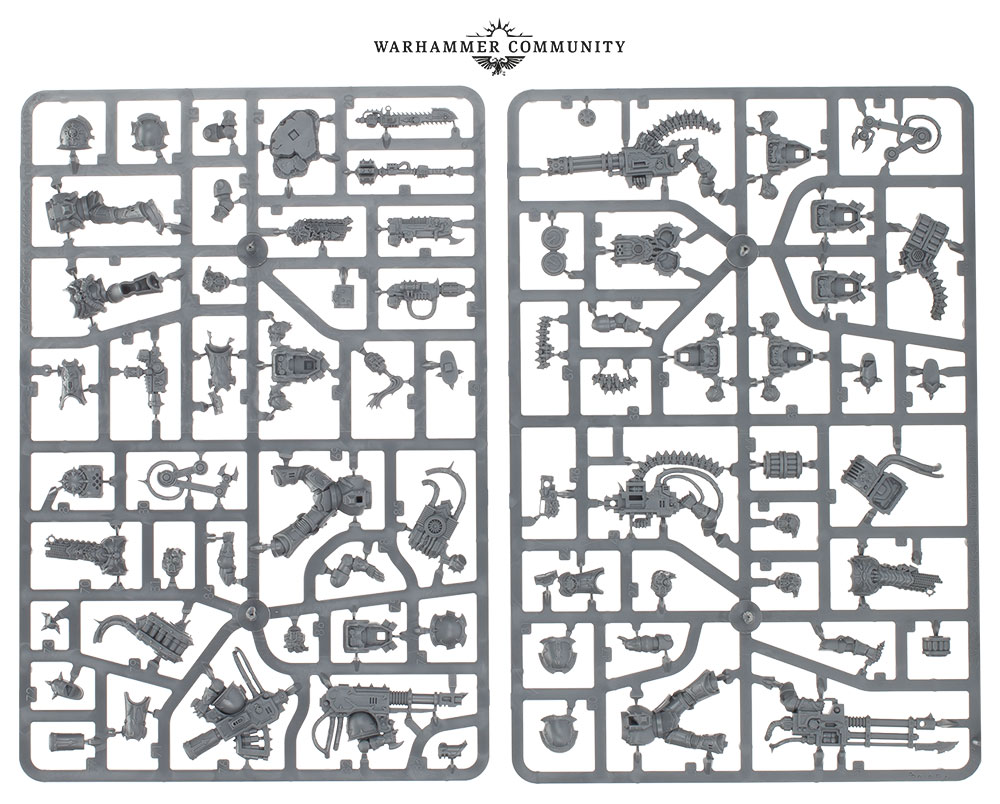
Now… in the case of Warhammer, and other miniature-based games where the make, model and configuration of the miniature is attached to lore and backstory as deeply as it is. It becomes a bit more difficult to just run copies off and kick ass with. You can’t just stroll in with 30 high-octane 3d-printed replicas of that one specific guy and expect to be allowed on the table. But they can surely show up with a chapter of the Adeptus Astartes of their choice. (Wanna play the Sons of Antaeus? Or some other obscure chapter? You can do that.) It certainly becomes easier to get the models and print them up yourself. And as the cost of 3d-printing and the materials to do it with plummets, it becomes more economical as well.
Because with the democratization of the technology to make your own things, and the more accessible it becomes, the more interesting and incendiary this debate is going to become. Ask a professional photographer what business is like now that everyone is walking around with a camera in their phones that make most DSLR’s from 10 to 15 years ago seem like pre-historic junk. I imagine they’ll tell you. Ask voice actors how threatened they feel by the Photoshop for Voice Adobe’s working on. And the tech and materials for 3d-printing are only going to get cheaper. Have a look at how cheap you can get blank DVD’s nowadays. Especially now that Blu-Ray DVD read/write drives are no longer only priced for rich folk that want to impress other rich folk. You think 3d Printing won’t go the same way?
Again, smile when you say it.
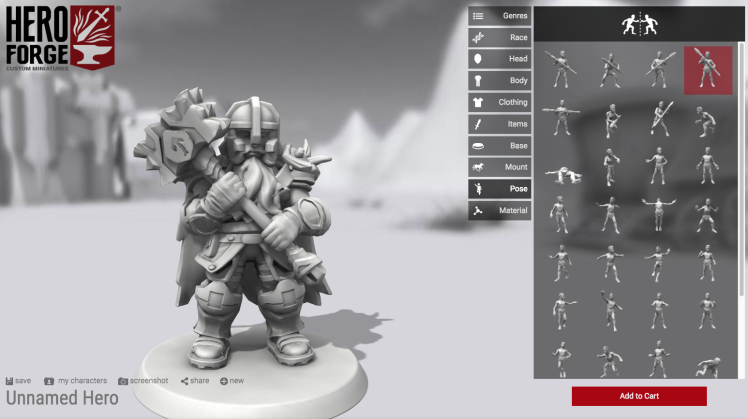
It already is.
It becomes a question of how the gaming industry responds to the dilemma that it will almost certainly face. Do they embrace it or fight it? There’s already sites out there like Hero Forge where you can assemble custom minis of your own from select-able 3d pieces in a browser window and save it to a cart to have them print for you. That nicely removes the idea of not having a nice enough 3d printer for now. So far, the quality of a 3d print is still something of a barrier to widespread exploitation. Right now it’s too expensive for most to get into only to print something that’s going to have striations or ‘print lines’ in it. If you’ve got an extra 10 to 20 grand lying around, you can get a nice printer. But people who can afford those could afford pretty much any object they’d want to print already, so the problem negates itself. The Hero Forge people are essentially selling quality and versatility, in that they do them in plastics as well as metals.
How long that lasts really depends on how quickly the technology improves and how cheap it is to acquire. People paid photographers to produce quality prints when I was a kid. Nowadays we all have a professional photography studio in our pockets. Usually with in-application buttons to send your pics right to a printer of your choice online. How long until an equivalent of the same exists for miniatures? Probably not long.
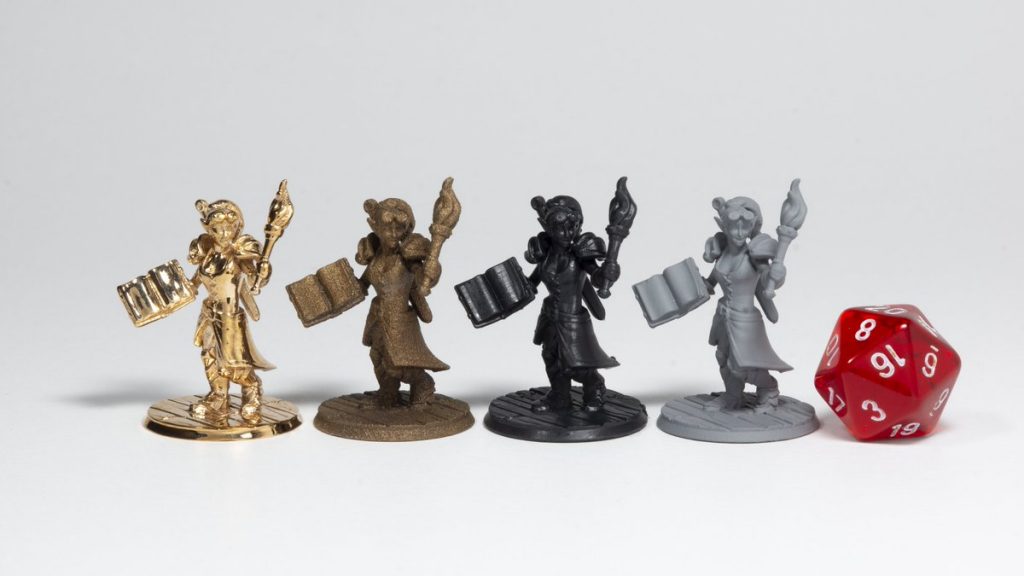
An idea I’d had this week was for things my White Metal Guys could do at conventions in the future. One thing that occurred to me was something I got some years back. I got a 3d scanned miniature of my wife printed for 100 bucks. One of her in a nice dress. What if you 3d scanned people at conventions in cosplay and printed them as minis? More to the point, what if you scanned, printed and had our artists like Preston or Brian paint them? I think that’d be a pretty killer app for us to have in our arsenal. I may campaign for it. We’ll see.
Like all things, this could be used for good too. If you’ve ever had to order a replacement part for a model you bought or broke, you could always just go to the company that made the model and download the part you need. Print it right up and get back to building or repairing your piece. And that’s if you didn’t just buy the model to start with. Just call it up and print it right there. Or if you liked, I think I remember reading about how there’s good 3d scans out there of all those old Ral Partha minis from old D&D miniature lines available for download and reprint. Hey. If they were good enough for WizKids to make HeroClix out of, they’re probably good enough for your game table.

This is a debate that is coming. And it will have deeper implications and effects than anyone currently seems to be planning for. The democratization of things isn’t just a niche gaming miniature market issue. This comes down to machine parts. Replacement parts. Free Market. The definition of ownership. What can and can’t be copyrighted. What happens when everyone can make everything they want? Do they only buy raw materals and things they cannot make themselves instead? What happens when you functionally have a replicator to make whatever little object you desire?
We’ll see. I’m pretty certain we’ll see.
-Edward WinterRose is a gaming and technology geek who is pretty sure he’s looking forward to the technological singularity. And hopes it will happen in his lifetime. NERRRRD!!

